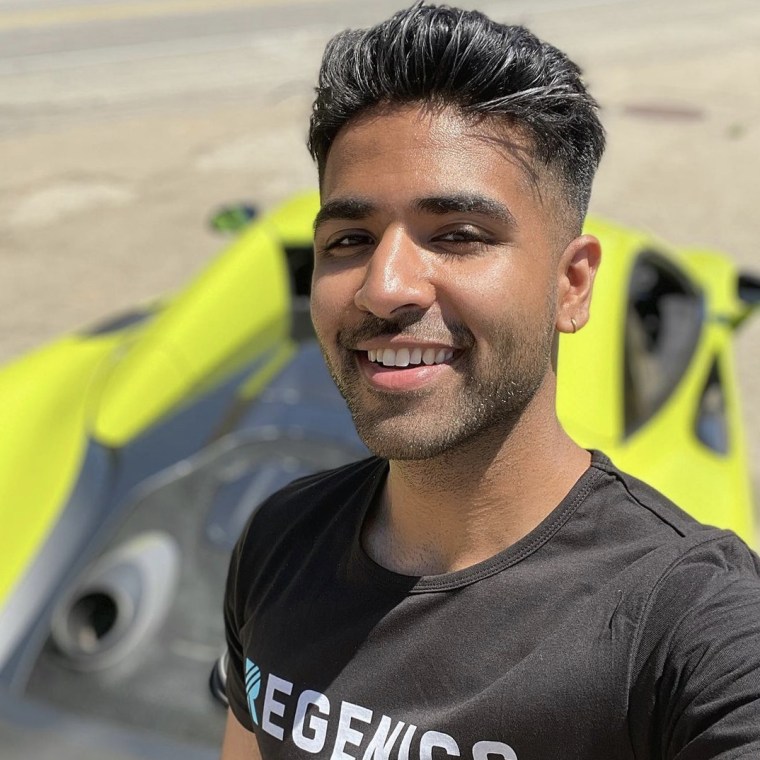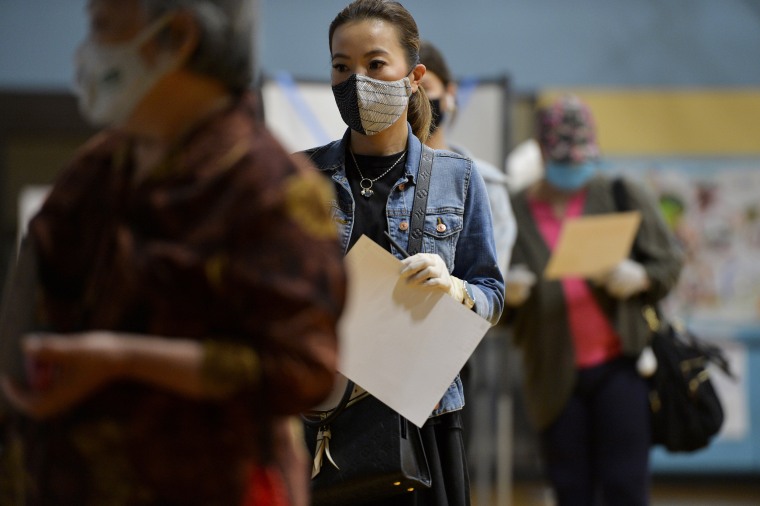For decades, political campaigns paid scant attention to Asian American voters: The population was low. The Election Day turnout wasn’t there. Some had language barriers.
But in the fast-approaching special election to replace scandal-tanked Republican George Santos in New York’s 3rd Congressional District, voters from the Asian American and Pacific Islander communities could help determine the outcome.
About 18% of the district’s electorate is Asian American, according to the nonpartisan engagement group APIAVote.
And from downing shrimp dumplings to taping Lunar New Year greetings in Chinese, the candidates — former Rep. Tom Suozzi and Nassau County Legislator Mazi Melesa Pilip — are openly chasing their support in a district that covers parts of Queens and New York City’s Long Island suburbs.
An Emerson College Polling/PIX11 survey of district voters released Jan. 18 showed a tight race, with about 45% of voters behind Democrat Suozzi, 42% backing Republican Pilip, 5% supporting someone else and 9% undecided.
While Pilip led among white and Latino voters, Suozzi was ahead “among the district’s large population of Asian voters,” 60% to 25%.
Rep. Grace Meng, D-N.Y., the first — and only — Asian American woman to represent New York in Congress, is stumping with Suozzi. “I try to tell our Asian communities that we have been used to being marginalized, but in this case, we can be the margin of victory — and that all depends on if they come out to vote,” she says.
On the trail, Meng said, “We’ve been having fun with the different, diverse Asian community groups — dim sum events, Korean barbecue, Korean fried chicken. He’s been going to South Asian restaurants and [on] small-business walks; meeting with religious leaders.”
Suozzi has also campaigned with New York City Council member Linda Lee and with Christine Liu, the first Asian American elected to the North Hempstead Town Council. The campaign said it has advertised with Chinese and Korean newspapers, radio and TV stations, as well as South Asian papers. It also has multilingual campaign literature and is phone banking with speakers of Chinese, Korean and Urdu.

Meng hopes the focus on AAPI voters in the district will serve as a model for future campaigns: “We are always trying to remind candidates on both sides of the aisle how important it is to reach out to the Asian community,” Meng says, “and that there are polls that show that most Asian voters in any given election around the country do not hear from either party.”
While many Asian American ethnic groups have leaned Democratic in past elections, Pilip’s team says they’re hardly ceding the AAPI vote to Suozzi.
“Asian voters are of main importance and significance to us,” says Nassau County Republican Committee Chair Joseph Cairo Jr., who hopes the life story of Pilip, an Ethiopia-born daughter of Orthodox Jewish parents who emigrated to Israel at 12 and subsequently to the U.S., may resonate among Asian immigrant communities and voters for whom English is not a first language.
Pilip has “been meeting with various Asian groups in the community. She has members of her team, volunteers, who are Asian-language speaking. They’re making phone calls,” Cairo says.
Meanwhile the candidate is hitting Lunar New Year festivities in places such as North Hempstead and Oyster Bay and is backed by Ruka Anzai, a Japanese American former candidate for state Assembly, as well as other local lawmakers he says have strong support within the AAPI community, Cairo said.
The Pilip campaign is using WeChat to reach AAPI voters and expects to do more advertising with ethnic media in the final stretch. “On Election Day and throughout early voting, there will be Asian poll watchers as well,” campaign spokesman Brian Devine said.
APIAVote Executive Director Christine Chen says when it comes to New York’s 3rd District, a strong showing could really reverberate — particularly if the off-season election has a low turnout. At 18% of the registered voters, she says, Asian Americans “should be considered a margin of victory. They should be part of that equation.”
As the Pew Research Center noted in a January report, “Asian Americans have been the fastest-growing group of eligible voters in the United States over roughly the past two decades and since 2020. Their number has grown by 15%, or about 2 million eligible voters, in the past four years.”
Still, “sometimes I feel like we’re still having to prove ourselves,” Chen says. “Sometimes I think that we’re being undervalued and we’re being underestimated for our power and the numbers that we actually have.”
To mobilize voters in the district, Chen says APIAVote will spend about $100,000 on multilingual mailers and digital ads — with that effort augmented by “sweat equity from volunteers.”
Notably, she says, “more and more Asian American voters are identifying as independent. … I don’t think folks are really happy with Democrats or Republicans and the labels. It’s really more about hearing from the candidates about what solutions [you’re] going to provide for my family locally,” whether on the surge of anti-Asian hate, the economy or something else.
On the Queens side of the district, Navkiran Cheema might also be just the kind of person whose vote both Suozzi and Pilip would both love to score.
The 28-year-old South Asian engineer, who lives in Whitestone, also isn’t registered with a party, cares deeply about taxation and bail reform — and hasn’t made up his mind whom to vote for yet.
While Cheema has seen some South Asian-language campaign materials, and even says a compelling candidate message could influence his choice in the waning days of the race, he’s more focused on doing his own research than being swayed by the season’s barrage of campaign ads.
“I kind of want to drown out the exterior noise [and] look at the actual policies,” he says.
For more from NBC Asian America, sign up for our weekly newsletter.
